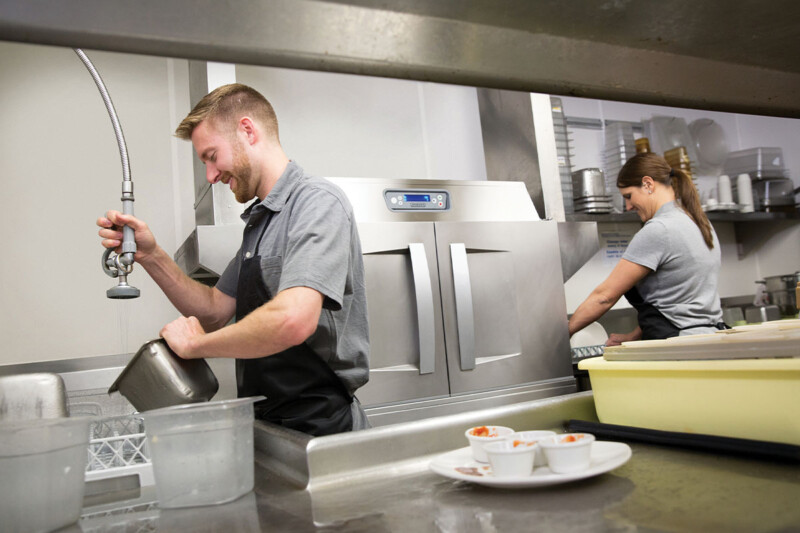Air Now: Explore the Latest Happenings With CKV Systems
Consultants and manufacturers highlight developments in commercial kitchen ventilation.
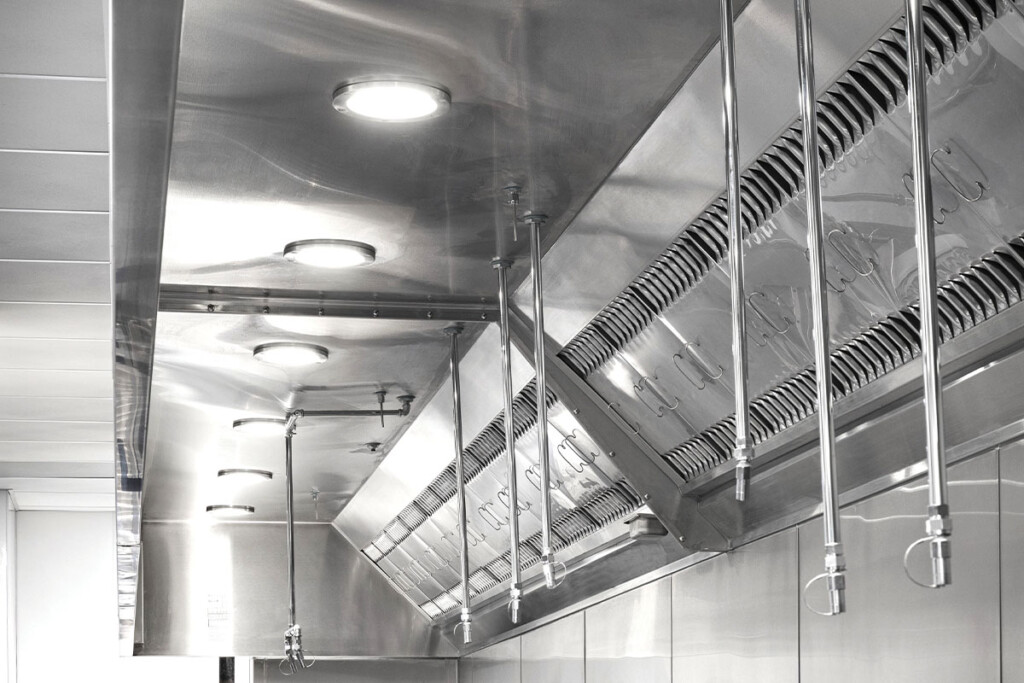
There was a time when working in the kitchen meant you were stuck in a noisy, hot, sticky environment, sometimes filled with smoke. Today, that atmosphere is no longer a necessary evil. Creating a comfortable work environment depends on a commercial kitchen ventilation system where all the parts work together, balancing and regulating airflow throughout the day. The equipment has improved over the years, with everything from incremental changes in design to larger innovations such as smart controls to improve energy efficiency, meaning today’s CKV systems work behind the scenes to create a better environment for everyone.
Cleaner, more comfortable air plays an important role in three areas:
• IN THE KITCHEN: Quieter fans, more efficient exhaust hoods and conditioned makeup air create a comfortable workplace. That in turn improves employee productivity and retention, an issue especially important in today’s foodservice industry. Showing just how important this factor is, a 2019 California Division of Occupational Safety and Health draft standard proposed kitchen temperatures must be 82°F or cooler to allay heat illness at the workplace. “I predict that OSHA regulation will eventually seep into the mainstream for the entire country,” says Kip Serfozo, design director, Cini-Little Int’l.
• IN THE DINING ROOM: Customers will notice if they’re hot or cold, or if odors from the kitchen overwhelm their own food experience. In an environment with a well-balanced CKV system, customers might not consciously take into account the air around them, but they’ll be more likely to linger, ordering dessert and drinks, as well as recommending the restaurant to others.
• OUTSIDE THE OPERATION: CKV systems help reduce pollutants, odors and smoke exhausted outdoors. The specific regulations vary from city to city, where operators located near an apartment building or park or inside a multiuse building often face codes that regulate the amount and size of particles coming from exhaust units. But these issues are becoming more important for everyone. As the net-zero by 2050 initiative by the Department of Energy and other groups gains traction, pollution scrubbers and energy savings that come from demand control kitchen ventilation systems will help operators reduce their carbon footprint.

Changing cooking processes can reduce grease for less reliance on exhaust systems. Courtesy of Cini- Little Int’l.
THE BIG PICTURE
Before delving into the specifics of each piece of equipment within a CKV system, it’s important to think about the overall kitchen design. Two factors determine the type of equipment needed in a system and its placement, and that is the cookline itself and the airflow in the space. “One thing we’re seeing lately is operators trying to find ways to make the exhaust system smaller or even nonexistent,” Serfozo says. “Using ventless equipment is one option, as well as changing up cooking techniques. For example, using a charbroiler only to mark proteins at the end of the cooking process to minimize the grease produced.”
Installing electric cooking equipment instead of gas also improves the overall environment in a kitchen. “Gas gives off byproducts, releasing more carbon into the air, so without that the hood doesn’t work quite as hard,” Serfozo says.
In addition to the cookline, understanding the overall airflow is critical to a well-balanced CKV. An island canopy hood placed in the middle of a kitchen is susceptible to drafts and disturbances from doors opening or people walking past, and so, they need to run at higher exhaust rates for effective capture and containment. Where possible, designers recommend installing a wall canopy hood up against a wall, which can contain some of the smoke and vapors. Consider side panels for further containment.
The system needs to replace air exhausted from the kitchen, and where that air comes back in and at what velocity is another important consideration for overall balance. “You want to avoid a four-way diffuser, especially close to an exhaust system, as it puts air in at high volumes and creates negative pressure, pulling heat out of the hood,” says David Zabrowski, vice president of Frontier Energy. “The systems that work effectively, such as perforated supply plenums or capture jets, replace air more subtly.”
PIECES OF THE PUZZLE
The main components of a CKV system include the exhaust hood, the makeup air unit, the DCKV system and the pollution control system. Manufacturers are constantly working to make each of these components more energy-efficient and productive, meeting the demands of operators and municipalities who want cleaner air and better environments both inside and outside foodservice operations. There also are some newer innovations and added features that help improve efficiencies of CKV systems.
One of the newest innovations in DCKV uses thermal imaging to look at 160 unique temperature points on a cooking surface, allowing for a more rapid response time than either temperature sensors or ultraviolet lights designed to detect smoke. Internet of Things-based systems collect data on temperatures that can be used to anticipate a variety of things. It could sense when conditions are favorable for a fire to start and alert the operator before the fire suppression unit triggers the release of an extinguishing agent.
Any time a kitchen undergoes a renovation or remodel, the CKV system should be reassessed.
Another new feature is the indoor environmental quality sensor on one manufacturer’s DCKV system. As an offshoot of the COVID-19 pandemic, it was found higher levels of CO2 equate to higher levels of virus transmission, so this system triggers more exhaust to ventilate the space as CO2 levels rise.
Cost is always a factor in equipment purchases, and to help allay the capital expenditures related to new DCKV systems one manufacturer created a program that allows operators to pay monthly.
New features on exhaust hoods also play a role in improving kitchen operations. Some manufacturers are upping the game on pollution control with grease-grabbing filters in the hood, while another added a pollution control unit within the hood itself. The pollution control unit in the hood not only cleans the air leaving the kitchen, but also opens space from what would normally be an entirely separate piece of equipment for more service options such as a rooftop bar.
Another important feature as labor savings take even more precedence in kitchen operations are clean-in-place hoods. Rather than manually removing the filters in a hood and washing them each night, hoods with a clean-in-place feature spray water over the filters at intervals during the cooking process, removing grease before it coagulates on the filters.
PUTTING IT ALL TOGETHER
Here are a few details to consider when specifying new CKV system equipment for an operation.
EXHAUST HOODS: Getting the size right is the most important thing. Consider the type of equipment you will use, whether it’s electric or gas, where it’s placed in the cookline, and what types of foods you will be cooking. Look for UL-listed hoods at a minimum, but also consider equipment that has ASTM F1704 certification.
DCKV SYSTEM: Make sure the unit is compatible with the HVAC and makeup air units. Consider the type of temperature control sensor based on the type of food cooked and processes used in a kitchen.
MAKEUP AIR UNITS: Regulations require makeup air to be within 10°F of the indoor temperature, which means most operators specify a unit that can heat the air at the very least. Cooling functions are important as well for overall kitchen comfort, and costly to add on after the fact, so it pays to make that decision at installation.
POLLUTION CONTROL DEVICES: A specific area’s codes and regulations play the determining role in what type of pollution control device you install, if any. Cost also is a consideration, as the energy used to run these systems may outweigh the environmental benefits.
IMPROVING EXISTING CKV
Ventilation is often something operators think about at the time a kitchen is designed and then forgot about, as exhaust hoods can last the life of a building. But with new technology making systems more efficient, when is it appropriate to consider an upgrade or new equipment?
Any time a kitchen undergoes a renovation or remodel, the CKV system should be reassessed to make sure the exhaust hood and all other components are the right fit for any new equipment in the cookline. Most of the time, rather than installing a new hood, the existing hood may require a retrofit with new direct-drive fans for improved efficiency, or a DCKV system to allow fans to automatically adjust during downtimes.

Regular maintenance keeps a CKV system in shape. Courtesy of Halton.
Operators looking to simply improve a CKV system’s performance and efficiency don’t need to purchase new equipment. Instead, regular maintenance, including keeping filters clean and replaced as necessary, plus cleaning the bulbs of an ultraviolet system and sensors of a DCKV system can help keep the equipment working at peak performance levels.
Also, Zabrowski recommends rebalancing the exhaust system every three to five years. “In a belt-driven fan, the belts will stretch over time so you’re not moving as much air as you once were. Other things can happen as well to cause airflow to go negative or positive, such as change in placement of equipment or traffic flow in the kitchen, and those drifts impact performance.”
Air is something we don’t see or touch, and because of that CKV systems often get overlooked. But don’t underestimate the importance of clean air and a comfortable work environment for the long-term success of any operation.
California Energy Wise has created a group of design guides specifically for operators. Visit caenergywise.com/design-guides to learn more about selecting and sizing exhaust hoods, optimizing makeup air, calculating energy costs and more.
Setting Up
NOTE THE LATEST PRODUCTS AND TECHNOLOGIES AIMED AT ADVANCING COMMERCIAL KITCHEN VENTILATION SYSTEMS.
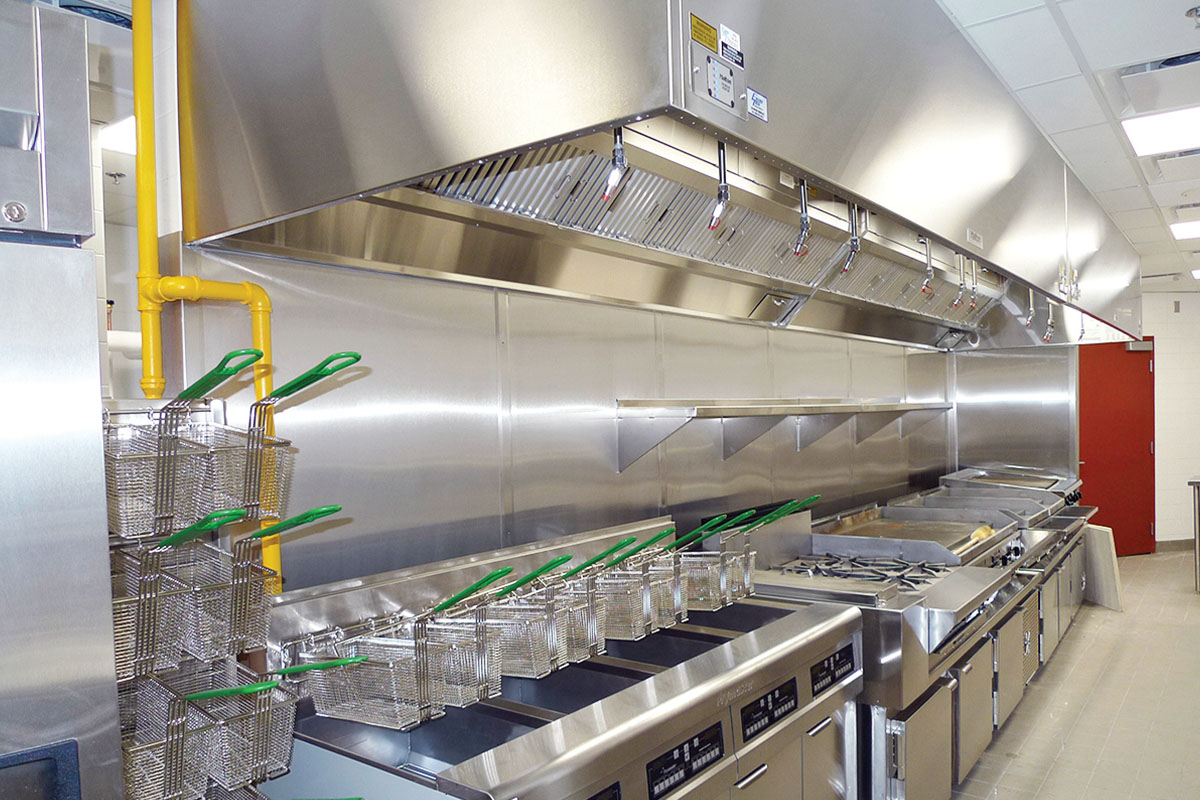
Halton
MODEL: SafeGuard
FEATURES: Keep fire-causing conditions in check with notifications and improve indoor air quality via a full suite of sensors available through this IoT-connected platform. It also comes standard with DCKV to reduce energy consumption.
WEBSITE: halton.com
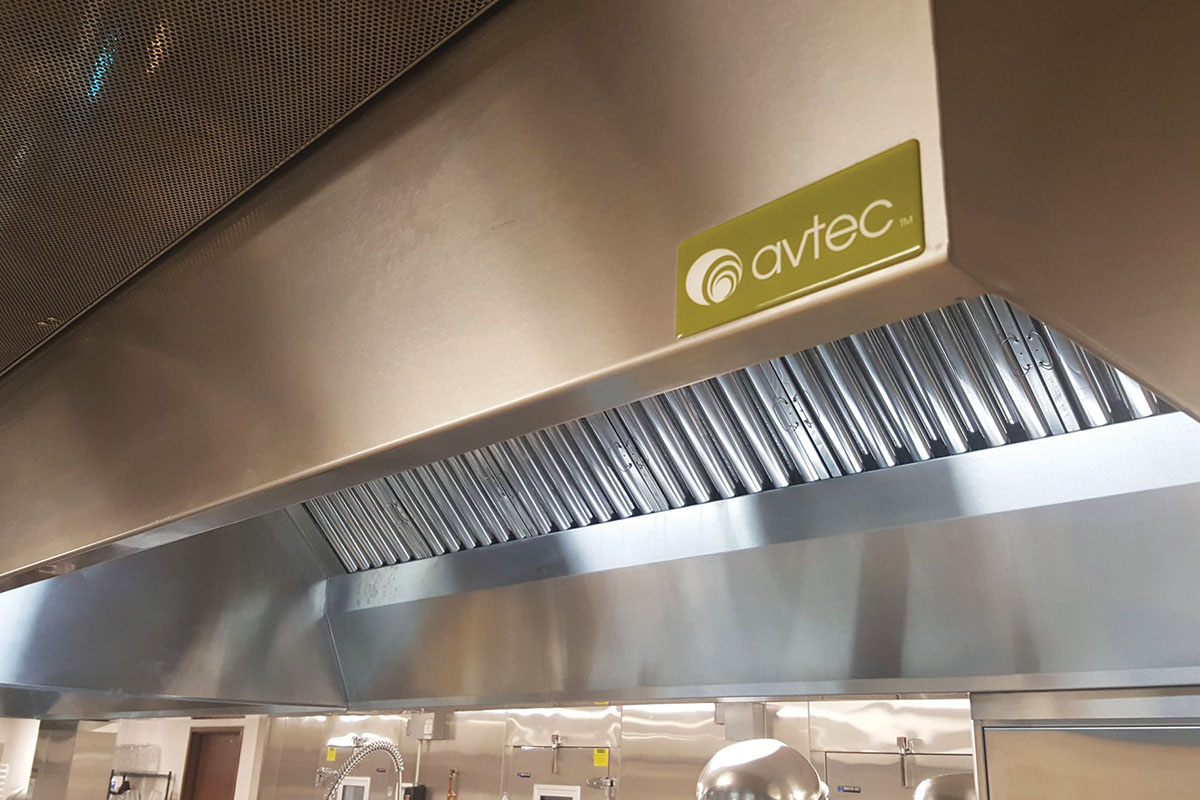
Avtec
MODEL: SimpleSpec Ventilation
FEATURES: SimpleSpec serves as a cost-effective option when it comes to exhaust hoods. Choose from a variety of styles, from fryer hoods to dishwasher canopy hoods.
WEBSITE: unifiedbrands.net
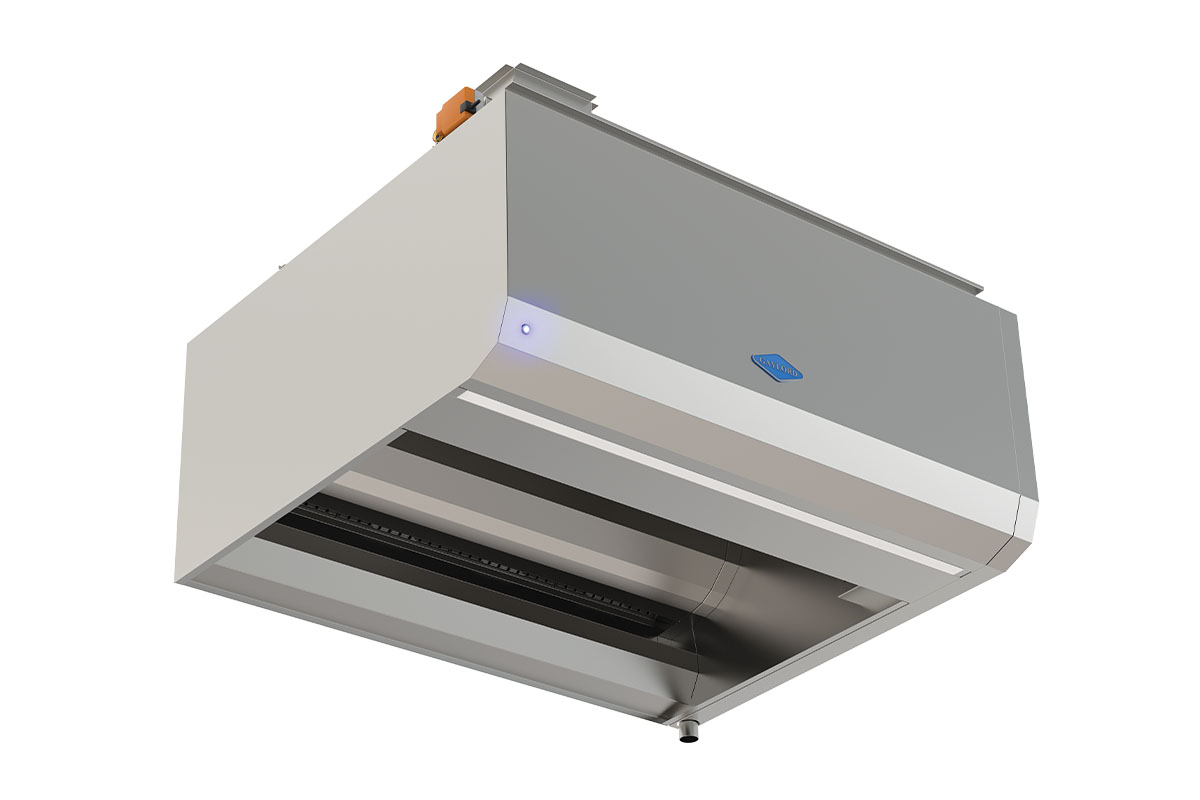
Gaylord
MODEL: Eliminator Pollution Control Ventilator
FEATURES: The unit reduces smoke and odors in a small, cost-effective footprint. Its in-hood integration means it doesn’t require space in a mechanical room or on a rooftop like a standalone model.
WEBSITE: gaylordventilation.com
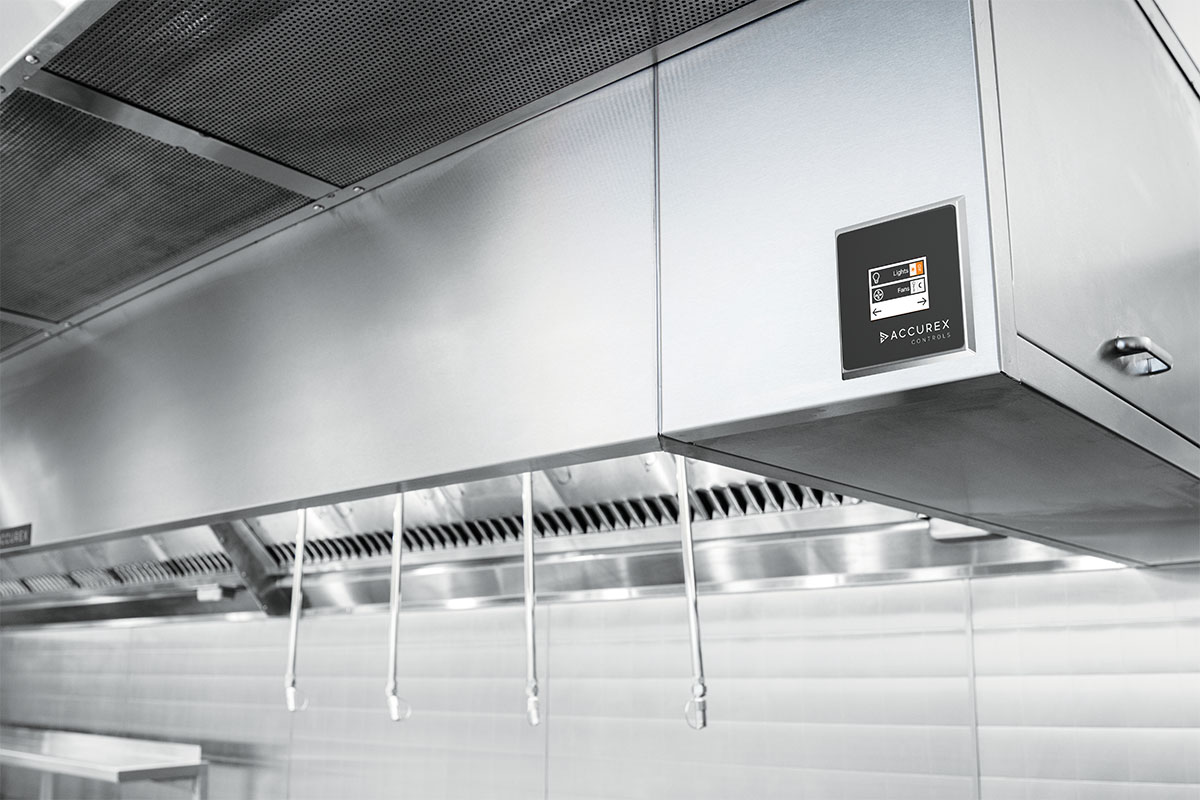
Accurex
MODEL: Controls Platform
FEATURES: The enhanced controls solution simplifies operating an entire CKV system, including exhaust fans, makeup air and a constant volume or DCKV system. A full-color touch screen makes operation easy to navigate.
WEBSITE: accurex.com
RELATED CONTENT
- Advertisement -
- Advertisement -
- Advertisement -
TRENDING NOW
- Advertisement -
- Advertisement -
- Advertisement -


